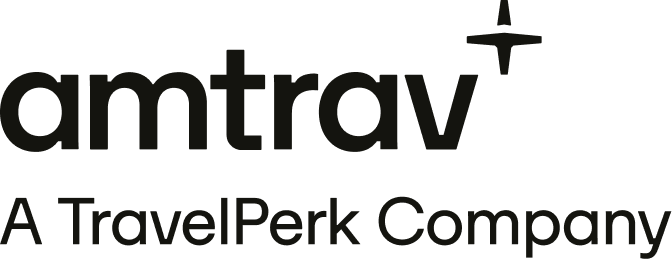It's RFP season. And so we are here to talk about how to maximize your hotel savings in 2024, and you're in the right place to learn about that.
[Speaker 1]
Hello to everybody who is filtering in. It is one o'clock here on the East Coast. We will get started in just a minute to give some folks time to join.
All right, we'll go ahead and get started. We've got a lot to cover today. First of all, thank you all for joining, wherever you are.
Nice to see you. It is hotel RFP season. I don't know, is pumpkin spice latte out yet?
It's not really fall where I am, but it's still RFP season. And so we are here to talk about how to maximize your hotel savings in 2024. Somebody included as a question when they registered, how do I maximize my savings in 2024?
And you're in the right place to learn about that. We are Amtrav. I'll be back later once our esteemed panel and leader, Greg, are done.
I'll be back later to talk a little bit more about Amtrav, but most of what you're going to hear today is on hotels in your travel program. But again, we're Amtrav. Our goal is to help you get the full value of your business travel by reducing obstacles, complexity, and cost in getting places.
Right. Next slide. I get the honor of introducing our panelists and Greg today.
We have Leanne Schwartz from Miller Pipeline. Leanne is a corporate travel leader with experience working in hotels and managing travel programs. Today, she helps her 3,500 Miller colleagues travel safely and efficiently to sites across the United States performing critical infrastructure work.
We also have Lucy Puga. I am pronouncing that correctly, right, Lucy? Thank you.
She is, again, a travel and hospitality expert. She held leadership positions at Omni Hotels before joining Access Technologies and helping her team travel across the United States. Finally, we have Greg Ross here.
He is the vice president of relationship management here at Amtrav. He is a veteran and an expert and a person that we chose when we thought of this webinar. So with that, Greg, take it away.
All right. Well, hi, everybody. It's so great to be with you on this call today.
We're going to go over a few things, but let me just tell you a little bit of background about myself real quick. I have been in this business for a long time, over 30 years. And the whole time has been in pretty much in account management, relationship management, which includes hotel negotiations and various things having to do with hotels, car rentals, airfare, whatever type of negotiation it is.
So I probably negotiated probably a couple thousand maybe different hotels throughout my career, maybe even more than that. But just wanted to let you know a little bit about my background and where I'm coming from with this webinar. We're going to, first of all, talk about the rates in 2023 and then coming up in 2024.
And then we're going to go over a little bit on ways to save on hotels. This is critical, especially in the day and age that we live in, the 2023 year, the 2024 year, which is often compared to 2019. And we'll get into that a little bit later.
And then we want to talk about is how can your Amtrab relationship manager help you with this? If some people like to do it on their own, some people give the whole ball of wax, the whole kit and caboodle over to their relationship manager here at Amtrab. And there's a fine mix there.
And so we'll talk about that a little bit more and the advantages of us helping you out. And then also at the very end, we'll go over some questions and see what you have. And feel free to type in the chat any questions as we go along the way.
And then we'll hopefully get to all of those at the end of the of the session today. So moving on here, let's talk, as we mentioned before, talk about rates in 2023, 2024. As you can see by this slide, what happened?
What in the heck happened in 2022? And so it was 2019 is what it is. Again, that's usually the benchmark for for current years, hopefully not for years to come, but for this year, last year.
And then and then we can't really take in 2020, 2021 as a as a benchmark as things drop dramatically. Hotels were laying off people. People were wearing multiple hats in the various hotels.
But all of a sudden in 2022, hotel rates increased 34 percent. And so which is huge. Right.
So we were all used to paying these low rates. And then all of a sudden, boom, the hotels come back and say, hey, we're going to go back. We're going to get back to where we were pre pandemic.
And so we raise the rates and sometimes even higher. But overall, nationally, the average rate increase is about 80 percent compared to 2019. We're showing it a little bit more than the 2019 rates.
But I think when you consider things like the big cities like San Francisco, for example, I was on a webinar the other day and it only showed that they were at about 53 percent with their hotel rates and different things like that compared to what 2019 was. They're trying to get more business there. These, you know, these larger cities.
But New York, on the other hand, was way above, was way over and above what what was expected for this time. So it really depends on where you're going, what the average is and what what you're taking into consideration for that average. Looking at this chart.
So the gray is 2022 and the blue is 2023. As you can tell, there's not much difference, right? There's not much increase in 2023, just a little bit.
And so per the red chart on there, the two star hotels were about at a 5.4 percent increase year over year this year compared to last year. The three star hotels have the least amount of increase. So that's probably more like your courtyards, your Hampton Inns, your, you know, that level of hotel.
And then the four star would be more pulling on the full service type of hotels, you know, the Marriott's, the Hilton's, different things like that. So interestingly enough, interestingly enough, they only just bumped up a little bit this year. And so when you're doing your RFP program for this year, notice that if you're getting RFPs that come in at a huge increase from last year, you might want to double check that.
Look at it. Renegotiate. We'll get into that again a little bit more here as we go along.
But it's so important that you pay attention to the difference of what the rate was last year compared to this year and moving forward on that. On the 2024 hotel rate forecast. So here we go.
At 2019, the average was $168. And these are taken from the Global Business Travel Association numbers, so GBTA, and their travel forecast for 2024. And so $168 and then 2022 goes up a little bit.
2023 went up, this year went up a little bit more. And then, well, 2022 went up a lot compared to the years prior. And then in 2024, just a little bit more.
So again, watch those rates when you go to negotiate that they're not, the hotels aren't coming in at a huge increase. And so we just need to be careful and watch that as the RFP process continues on. On the right hand side, you'll see the different rates as they move along.
Midscale compared to upscale, what you should be looking for. I think most of us, depending on, I guess, how much our travel policy compliance per diem is, we just want to pay attention to either the really nice hotels or the mid-scale hotels, which is what most people are driven to, is that mid-scale price. For the 2024 hotel rate forecast, let's look at that.
So just kind of what we've already talked about just a little bit, there was a 34% rate jump from 2021 to 2022. It was a one-time event. Let's hope that we don't go through that again, right?
We don't want to go through the pandemic again or anything like it. It was a hard time for all of the hotels. Like I said before, people were wearing mini hats.
People were doing, you know, cleaning bathrooms and going to the front desk and doing all sorts of things. Let's hope we don't have to live through that again. And then the normal increase there was three to four percent.
Those types of increases, that's what we're seeing today. And then this provides a much less pressure on your travel budget for 2023 and 2024. I mean, going from $130 rate to $175 rate for your travel budget, trying to get back into the swing of things, trying to get back to normal again with your travelers on the road and all that, that was a little rough for a lot of companies that we do travel for.
That rate increase hurt, even though they had paid it in 2019. They didn't feel they were happy, you know, with the lower rates. And so it hurt when the rate went up as much as it did from 2021 to 2022.
But the lower rate increases mean lower rate increases in RFPs. So just, again, I can't say that enough. Watch your rate increase for the RFP for 2024 and make sure it's not a huge increase, if at all.
The other idea on that, too, is when you're negotiating for RFPs, negotiate if the hotel will for a two-year deal and not just a one-year deal. That means you've got that rate locked in for two years and not needing to go out to RFP again for that length of time, which is great. And so you're locked in and there's no rate increase.
So that's another idea on this. Let's go to the next one. First of all, though, on this one, I want to bring in the panelists.
And Leanne and Lucy, do you guys have anything to say with regards to what you're looking for in rates with regards to this process? Leanne, I'll let you go first. Yeah, go ahead.
[Speaker 2]
Okay. So we typically set kind of a benchmark as to what we'll accept for rate increases year on year. We won't always get that.
There are certain markets that will be over. But for the most part, we try and set our maximum increase that we'll accept. Because we are a more directed or centralized buy, we're able to target hotels where we currently have our existing business.
We aren't so broad in looking at such a huge array of hotels. We can drive our crew to specific hotels. So we can continue with the partners who supported us during the pandemic and build very good relationships with them.
We can be more selective on our locations. If we don't have sufficient business to warrant an RFP, then we'll rely on more of a chain-wide program.
[Speaker 1]
That's great. And, Leanne, before I move on to Lucy, Leanne, can you just kind of tell us a little bit about your business and what kind of hotels you're looking for with regards to your travelers? Because you book a lot of hotels.
[Speaker 2]
We do, yes. Most of our hotel rooms are crew-based business. We have a project that goes into an area.
Typically, it's a rather long-term project. We don't do a ton of short-term projects. So we'll be in an area for one or two years as they're seeing some growth in the area.
So we are able to find those hotels and build very good relationships with them over a period of one, two, three years. We also do our corporate travelers. We do folks that are out bidding on the jobs.
Corporate folks who are out traveling to our different office locations. With those, we may not necessarily have a crew hotel in place. So we rely on more of a dynamic rate with the chain-wise.
[Speaker 1]
Awesome. Thank you. Thank you so much.
Lucy, how about yourself? And tell us a little bit about your company as well, if you would. Sorry about that.
[Speaker 2]
Yeah, of course, of course. So we are a healthcare technology company. So we have clients all over the globe.
We travel for a variety of reasons. A lot of it is to support the national care-at-home conferences that occur all over the United States. So we have a lot of travel that happens over a couple of days, nothing too fancy.
But we also, of course, support our clients, sometimes on-site. And we also support our partnerships. We really value the partners that we have from a technology perspective.
So we also have travel out to them as well. So most of our travel consists of a couple of days at a time. But we do manage travel for almost everybody in the company to some degree.
So a lot of people that we manage at one time, which is why we're so appreciative of having a platform such as Amtrak to support us there. As far as what this information gives us, it's really good insight from an RFP perspective. We know exactly what we're going to look forward to.
I think last year when we were putting out our RFPs, that was a tough time to do that because you nailed it right on the head, Greg. Like the rates went from like 120 up to 170. So it became, what are we getting for these rates?
We transitioned entirely from what our preference was, maybe like a two-and-a-half to three-star hotel, to now where we really have something secured with a three, three-and-a-half star hotel just because of the difference in rates. They were asking for about the same thing, different amenities. So I think our focus, again, will be on maintaining the increase in the rate up to those thresholds that you mentioned.
I think that's great insight for us to know what to look out for. But we're going to continue focusing on the same thing, the quality of the amenities and services provided to our people. As they travel, that can be a really tough time because they're away from their family, their work, and all of that because they're taking on different work.
So it's important for us that they have a good hospitable environment to relax in at the end of the day and be able to take care of what they need to from a business perspective. So we know what to expect in terms of an increase in cost and how to negotiate these rates, to be honest. Coming into the new year, we're going to understand how we can negotiate, what thresholds to stay in with.
We don't want to burn any partnerships that we currently have. The hotels that we use really do take care of our people. And so we don't want to take advantage of anybody either.
We want to stay within the industry standards and continue to get what's best for our travelers. But we have a really good understanding of what we're going to be asking for at this point, I think. Our preferred options will typically depend on the quality as well as the distance.
Similar to Leanne, you have a project or a site. The distance is going to be important. So that's kind of how we make the selection.
But a lot of it will come down to the services.
[Speaker 1]
Awesome. Thanks, Lucy. And I know for you, Lucy, too, because you do some global, you also really rely on the safety of the hotel as well, right?
Where it's at in the city, all of that. I know you do some various around the world. So safety is, I'm sure, a concern as well.
All right. All right. Let's talk about ways to save.
We're going to go right into agreements and different types of agreements. I know all of you have heard this before, but for 2024, it might be just a little bit different when going to negotiate and different things like that. What do we want included?
What is it exactly? So as it says here, individual properties will negotiate dynamic percentage, which is a percentage off. And the dynamic rate is a percentage off or flat rates with 50 to 100 room nights minimum, saving about 10 to 25% overall is what we've come up with for our own Amtrak clients.
And that figure of 50 to 100 night minimums, it varies per city. I don't know, Leanne and Lucy, if you guys have noticed that at all, but we were negotiating a hotel back on the East Coast in one of the Carolinas. And the hotel was requiring a 250 night minimum stay for an annual agreement.
And so it's because they were constantly sold out. The demand was there. It was important to them that they get good quality booking agreement contracts set up so that they just didn't do the 50 to 100 room night.
They were requiring 250 room nights. So be careful with that as well. And so as we go here, so the property level agreements are in my eyes over the years, as I've experienced, this are always the best.
You can have dynamic percentages off as a backup. But but if you're going to spend 50 to 100 to 200 room nights at a property, always try and negotiate a local agreement. And then you can also secure money saving extras like breakfast, free parking, Internet, just different things like that that are important to you.
And then also maximize your savings in 2024. So push for fixed rates and money saving extras in 2024. Consolidate your spend at one or two properties.
So we have companies that sometimes feel like they need to have 10 different properties in one city. And so what that does is it dilutes the the power of negotiation. And so we always recommend let's narrow those 10 down to three or four.
And let's really go with a robust attitude into these hotels and say, hey, here's what we're looking for. We're going to narrow it down. We selected these top three.
What can you do for us? And let them know that you're used to having 10 or so in that in that city. And so it's so important that we that you understand that.
We at Amtrak have already started the 2024 RFP negotiations for a lot of our clients, because we have clients that have hundreds and hundreds of hotels that we need to get through. And we do have an automated RFP tool that we use, which is very cool. It allows us to communicate with the hotels and gets us the negotiating power that we need and all of that.
So we've already started that process. And then the other thing is check with the travelers who stay at these key properties most often to make sure they they're clean, welcoming, reliable or that for the colleagues. So Leanne and Lucy, just on that point, do you guys rely on your travelers opinions when it comes to hotel negotiation?
Do you ask them, hey, what is this hotel or anything like that? Lucy, we'll start with you first on this one, if that's OK.
[Speaker 2]
Yeah, sure. So we have we absolutely value the feedback, even when they don't offer any, I always make it a point to ask if I see them around the office because we want to make sure that we maintain that quality and service again for all of our travelers. You know, so that that is very, very important.
We also encourage our travelers to always offer, you know, a survey response through Amtrak directly. We do see those responses. And so we do leverage that as well.
And we share it with the partners at the hotel. And we do feel that, you know, these property level agreements that we have in place really do facilitate that relationship to where we feel like our our feedback is heard on the property level.
[Speaker 1]
Awesome. Thank you. Leanne, any input on that with regards to your travelers opinions?
[Speaker 2]
Absolutely. And we do look for our travelers as well, just as Lucy said, to get their opinions on the hotels. Excuse me.
One thing that we do is make sure that the travelers are receiving the agreed upon amenities, that they are getting the free breakfast that we've included, that they are not paying for parking, that they are getting the types of rooms that have been agreed upon during the RFP. It's very important to receive their feedback so that we know, yes, they're in a safe place. And yes, they are receiving the total value that has been agreed upon.
[Speaker 1]
Right. Thank you. Thank you.
Let's talk about chain wide agreements for a minute. Sometimes these are hard to get. Right.
So especially with, let's say, Marriott hotels, you have to have a zillion dollars worth of travel spend, you know, in order to get a chain wide agreement with with Marriott. But a lot of them don't require such heavy duty spend on their part. So major chains.
So again, chain wide agreements will give you a percentage off across the board. And so, yeah, at all these different hotel chains, and we'll talk about that more in just a little bit, but major chains like Marriott, Hilton require millions in spend to qualify. Smaller chains can be more accessible.
And then to maximize your savings, savings are lower than property level agreements. Use chain wide to fill in the gaps in your property level agreements. Sometimes the savings are better, sometimes not so much.
Amtrak offers a chain wide with 10 percent, at least 10 percent plus discounts. So when you don't need to have them on your own, we've negotiated on behalf of chain wide agreements for you. And those include IHG, Wyndham, Choice and Best Western.
And so just know that when you're using an online booking tool, never be afraid to book a chain wide rate that we have set up. If you have a question on, you know, can I book this or we're also partnered with ABC Hotels. Just know that you can always you're always available to book that.
Leanne, I'm going to point this at you just for a minute, because I know you have a few chain wide agreements. What do you think about those and how difficult was it to attain those?
[Speaker 2]
So these chain wide agreements allow us to focus more on our top 10 or 15 percent of our hotel spend. We aren't negotiating with all hotels, then we are truly able to to just focus on those top hotels. Then in the tertiary markets where we don't have the sufficient spend to warrant a negotiated rate, maybe one or two crew members every couple of weeks, we can go back and look at our chain wide agreements.
We do have them with a number of of our chains. If we don't, then we look on our A to B tool and Amtraf more than likely does as well. We can take advantage of those discounts or with your consortia discounts.
So it's very helpful to have those in place. Being dynamic, they aren't as easy to budget, but they certainly provide a substantial savings.
[Speaker 1]
Yes. Awesome. Thank you so much.
Additional options. What what is it? So TMC and consortia rates offer automatic savings at thousands of hotels.
So we we offer those on your behalf, just like Leanne was talking about. And then we also offer merchant rates from Expedia, Booking.com. They can offer good discounts, but beware of those.
Right. Those are they might not earn points and those rates might be non refundable on the A to B tool with Amtraf. We can actually exclude those from being booked if you don't want your travelers to be tempted to use those, because they are often come in at a lower rate and then maximize your savings like chain wide agreements.
These rates deliver savings at hotels outside your key geographies with property level agreements. And then, of course, merchant rates can also allow you to secure prepaid hotels for travelers on central cards, which is basically those Expedia rates, the Booking.com rates and different things like that. Let's move on to the next one here.
So let's how to run the RFP. Let's let's walk through this. And again, Leanne and Lucy, any input that you can provide.
So analyze, check your hotel data. So we have all the hotel data in our systems where you need property level agreements. Determine how many room nights you can expect in those key locations.
So basically, look at we run spreadsheets. We run reports on hotel volumes that are at least 50 room nights or more. And then we'll go through each city on behalf of our client to negotiate rates.
We put it through our automated RFP tool. It comes back again. We have that conversation with the sales director via our tool.
And so oftentimes we're not even calling at all. It's just it's just a conversation via the tool. And then and then we check the hotel data for chains, chain wide where you might qualify for a chain wide deal.
And so we'll always do that on your behalf as well, even though Amtrak has have those set up in your in your inside the online booking tool already. And then just as a reminder to check with travelers that have stayed at those hotels, make sure you're getting their opinions and that it's up to snuff and all of that sort of thing. So that's important as well.
Step two is to prepare and then send it. Identify the properties, which we've already talked about in key locations. Prepare your RFP template for the hotels.
Identify key hotels. Call and ask for the sales manager's name if you need to really do some heavy duty negotiation. We do that as well.
I know Leanne and Lucy, you have both done that. It's important to be able to negotiate to get the best rate and to really, truly know what you're getting. Right.
So we just want to make sure that that's always a possibility. Leanne or Lucy, with regards to how to run an RFP process, any comments on that at all? Or have we covered it pretty much?
[Speaker 2]
I think the first step is the most important part. A lot of times, you know, if you have a tool like Amtrav, it's great to have, but you have to learn how to leverage it. So that's step one.
You may identify cities where you have high enough volume to have an RFP and you've never put thought to it. So seeing it, visualizing it is really important as the first step. I think the rest of it was easy breezy.
It was facilitated greatly on our end by our relationship manager, Taylor. She's awesome. And so she was able to run the entire RFP process for us, made it very seamless.
We were in the process of trying to put one together ourselves and we were not having the same success. Had it not been for her, I think we got the best deal we could have gotten. We weren't having the same success on our own.
So we're glad she reached out.
[Speaker 1]
Very cool.

Elliott McNamee





